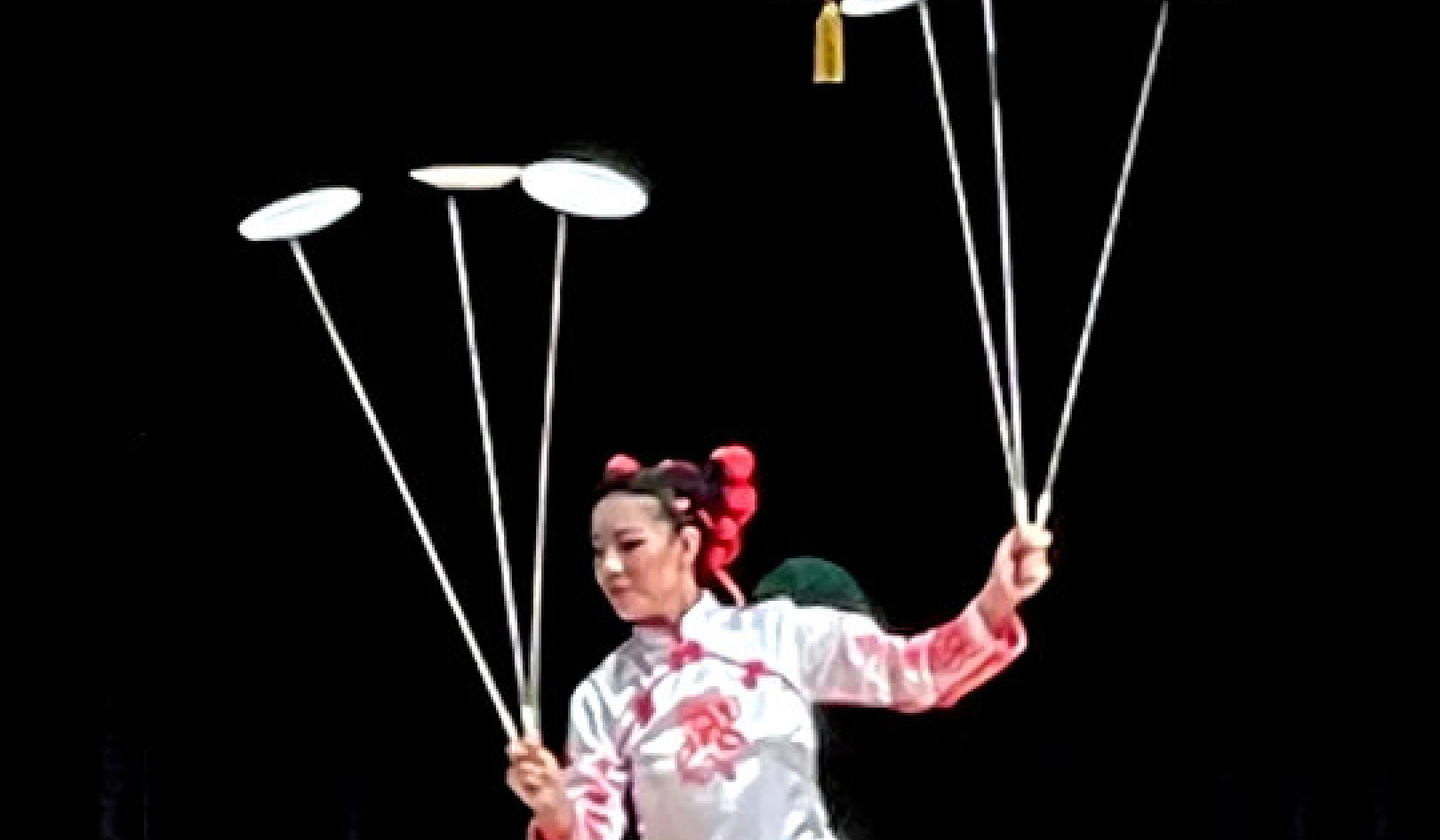
Imagine a scale with bricks on one side and a single feather on the other. Would this scale be considered balanced? Not by a long shot. Yet how often do we go through life with imbalanced aspects making us feel off-balance and out of harmony with our own integrity and values?
To not have inner harmony and balance is to walk through the world without a sense of being centered, grounded, and at peace. We don’t feel authentic at all, but rather experience a sort of mental “vertigo” that pulls us in one direction, even when we wish to go in another.
What causes this sense of vertigo? As we look closer and closer at what archetypes operate in our lives, we often see these imbalances and begin to realize how they have been making things much harder for us.
The Balancing Act
When one archetype has way more power over us than it should, we experience the results as chaos, discord, and lack of alignment between what we truly want and what we keep doing again and again with the same results.
In pop culture, the hero is the most popular archetype. Other popular symbols are the villain, trickster, guide/mentor, anti-hero, lover, femme fatale, explorer, boy/girl next door, rebel, visionary, dictator, diplomat, mother/father, victim/martyr, and the warrior. This is not an exhaustive list by any means.
By recognizing which archetypes are out of balance and need adjusting, we can begin experiencing a stronger inner peace and personal power because the scales are more even and so, too, are we.
Example: You are always angry at everyone. You always have to be right. You are bitter at the world and everyone who ever did you wrong. You are never at peace and always in an argument with someone over something.
Your angry “dictator” is out of control here.
Try this: Using whatever tool works best, visualizing, meditating, or journaling, get into that sacred space where you can call up the “dictator.” See that aspect of you standing on one side of your scales, making it grossly uneven. Tell it that unless it calms down, you will have to send it packing.
Now, call into your space the “diplomat,” or any other archetypes that you feel would balance the negatives. See that aspect step on the opposite side of the scale, bringing it into balance. The “dictator” can serve you well at times when you do need to firmly tell others what to do, as in delegating at work or managing a large group of people, but now your “diplomat” will balance out the anger and forcefulness, and provide you with a more even-keeled ability to instruct others to do what you want and need them to do.
We may not always want to eliminate archetypes even if they are out of balance, because some of their traits are helpful and positive at the appropriate times. By balancing the scales, we can make sure that there is a sense of real harmony within and, therefore, in our external world because we don’t feel so “one-sided” or extreme in our thoughts, actions, and behaviors.
If your “rebel” is acting out in harmful ways, you can even invite that aspect to “balance itself out” on the scales by finding a new way for this archetype to express rebellion and defiance. Instead of acting out in violent or abusive ways, or acting from a place of anger, rage, or revenge, bringing the positive “rebel” onto the scale can balance that particular archetype in the same fashion, without having to actually replace it. You may love to be a “rebel,” but you want to be one that doesn’t end up doing harm to the self or to others. Balance those extremes!
Chakras as Archetypes
The body has seven energy wheels called “chakras,” which comes from the Sanskrit word chakra. These seven energy wheels are located at various points on the body and contain bundles of nerves and vital organs. They also align with our psychological, emotional, and spiritual states of being.
There are seven chakras, each one archetypal in and of itself. But they also correspond with archetypes that can be worked with to create the desired physical and psychological outcome.
The first chakra, the Muladhara, represents our basic needs and stability. It is located at the base of the spine and the colon area. It is called the “root” chakra and it corresponds to the mother and father archetypes in the positive, and the victim and martyr in the negative. The balance must occur between our need to survive and be secure, and our need to nourish, be in harmony with life, and mother or father ourselves back to love.
The second chakra, Svadhisthana, is the sacral energy center of sexual well-being and creativity. It is located at the pubic bone below the belly button. The corresponding archetypes are king/queen and emperor/empress in the positive, and martyr in the negative. Balancing our worldly desires and pleasure seeking with our penchant for suffering and playing victim is the role of this happiness-oriented chakra.
The third chakra, Manipura, is the energy area between the belly button and the breastbone, known as the solar plexus, and the source of our confidence, self-worth, and personal power. In the positive, it is the warrior archetype; in the negative, it is the servant.
The fourth chakra is Anahata, the heart area, and corresponds to love, joy, peace, and unity with life and others. In the positive, the archetype is the free-spirited, generous lover. In the negative, it is the actor wearing a mask and covering hidden agendas and motives.
The fifth chakra is Vishuddha, also called the throat chakra. Through this energy center we speak our highest truths and verbalize our expression. The positive archetypes are communicator/leader and the negative are the child (often voiceless) and innocent. The balance occurs when we find our voice and speak it.
The sixth chakra is Ajna, associated with the “third eye” area of the forehead between the eyes. This chakra is where our intuition, imagination, and wisdom originate. The positive archetype is psychic/wise sage/intuitive and the negative is intellectual/rationalist. We must be a balance of both the intuitive and the rational.
The seventh chakra is Sahaswara, located at the crown, on top of the head. This chakra is all about enlightenment and connecting to our higher self and sources of wisdom. The positive archetype is guru/teacher/mentor, and the negative is egotist/narcissist. To reach enlightenment, we must release the attachments of ego.
The chakras represent deep energies, behaviors, and emotions that must be brought into balance to achieve true well-being.
Act As If
Acting as if is a great way to turn a desire into a reality. When we act as if we already have something, we take on all the qualities necessary to actually make it happen.
How can we just pretend to be something when reality is showing us we are not that yet? It’s not about the external, but the internal, where manifestation begins. When we get into the feeling of something, how it would feel to be healthy, empowered, compassionate, bold, or anything else, we begin to incorporate that energy into our internal being, making it a part of us that will, when the tipping point is reached, tip the scales in favor of what we now desire. That tipping point comes from disciplined thought and action toward what we want, as opposed to what we don’t want. It happens when we’ve felt our way into the new reality we want to experience.
For example: we want to be more “warrior” than “victim.” When we awaken in the morning, we can do a quick and quiet visualization of what our day will be like if we approach everything as a “warrior.” How might things turn out if we are bold, courageous, and willing to take on any challenge? How could we live differently if we leave the “victim” at home and let the “warrior” go into the world wearing a shield of love, compassion, honor, courage, and strength?
Throughout our day we can remind ourselves to get back into “warrior” mode if we slip back to default status. If we do this enough, eventually we won’t even have to visualize in the morning because “warrior” will become our default mode of behavior and how we go into the world, act, and behave. We have now changed the programming operating in the deep mind by constantly and consistently acting “as if” we were a “warrior” and not a “victim.”
Remember that the subconscious mind, as well as the unconscious, is very susceptible to what we tell it with our words and thoughts. When we tell the subconscious continuously “I want to be…” all we get are more situations where we “want to be.” If we constantly say “I will become…” then the world doles us back situations and circumstances where we always wish we would become… So we must be very careful to send the right messages to the lower levels of the mind.
Saying “I am” is taken literally in the deep mind. Saying it again and again becomes the new “normal” mode of thought and behavior. Never give yourself more of what you don’t want!
Watch What You Say!
Dawn Romeo, author of Change Your Story, Change Your Life and a psychotherapist and coach, suggests focusing on the words and internal images, rather than the external circumstances. “The way we feel and the images we hold in the forefront of our mind manifests in the life we live. If you define yourself as a struggling single mother who barely makes enough money to survive, then this will continue to be your reality,” she writes.
Romeo emphasizes that how we define ourselves can shift our external circumstances and opportunities. What we focus on expands, so it behooves us to focus on the things we want, rather than what we do not want more of!
Romeo’s book includes a seven-step plan for becoming the person we want to become, but it starts by first looking at who we are and where we are at in the present: “When you accept who you are in the present moment, then you can begin to change. You cannot change what you do not acknowledge.” We can then move forward and begin to become the person we always envisioned ourselves to be. That word “envision” holds a lot of importance, because it signifies our “visual image” of the authentic, real self we somehow abandoned, lost, or replaced a long, long time ago.
Authenticity comes when our image of who we want to be on the inside matches our outside projection and the way we portray ourselves to others.
©2017 by Marie D. Jones. All rights reserved.
Reprinted with permission of the publisher, New Page Books,
a division of The Career Press, Inc. www.newpagebooks.com
Article Source
The Power of Archetypes: How to Use Universal Symbols to Understand Your Behavior and Reprogram Your Subconscious
by Marie D. Jones
 Deep within your mind is a realm filled with powerful symbols that drive your thoughts, behaviors, and actions?often without your knowledge. This is the hidden world of “archetypes”: universal symbols responsible for who you are, how the world sees you, and what you believe about yourself and your life’s purpose.The Power of Archetypes will help you identify, understand, and work with the archetypes that exist beyond your conscious awareness to create your reality “behind the scenes.”
Deep within your mind is a realm filled with powerful symbols that drive your thoughts, behaviors, and actions?often without your knowledge. This is the hidden world of “archetypes”: universal symbols responsible for who you are, how the world sees you, and what you believe about yourself and your life’s purpose.The Power of Archetypes will help you identify, understand, and work with the archetypes that exist beyond your conscious awareness to create your reality “behind the scenes.”
Click here for more info and/or to order this book.
About the Author
Marie D. Jones is a best-selling author of nonfiction books exploring the paranormal, spiritual, scientific, and metaphysical realms, including 11:11 The Time Prompt Phenomenon and Mind Wars. She is also a novelist, screenwriter, and producer with several projects in development. She has appeared on radio shows across the globe, including Coast to Coast AM, NPR, and the Shirley MacLaine Show; has lectured widely at paranormal and metaphysical events; and has appeared on television’s Ancient Aliens and Nostradamus Effect series. She writes regularly for a number of paranormal/metaphysical blogs and magazines, Visit her website at www.MarieDJones.com

























